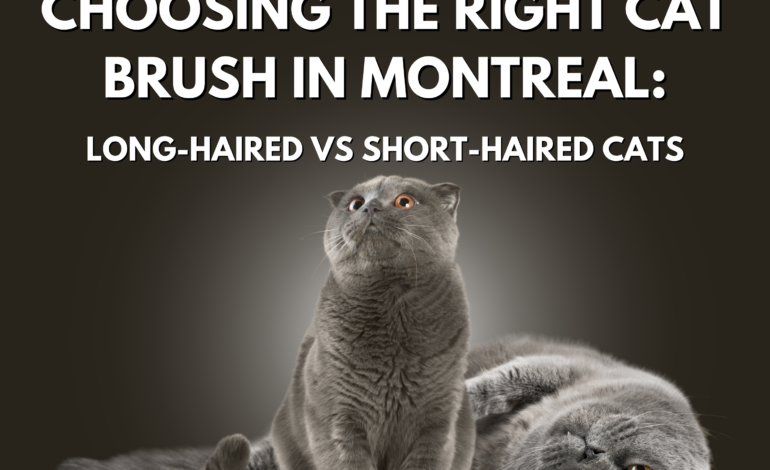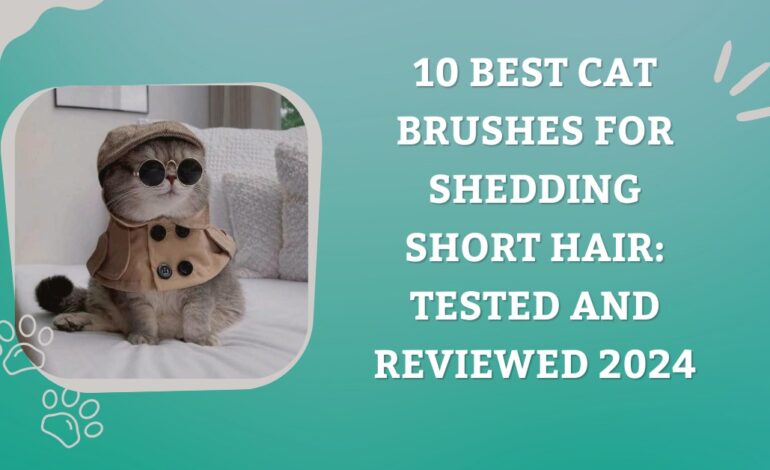Choosing the Right Cat Brush: A Practical Guide for New Owners in Ashburn
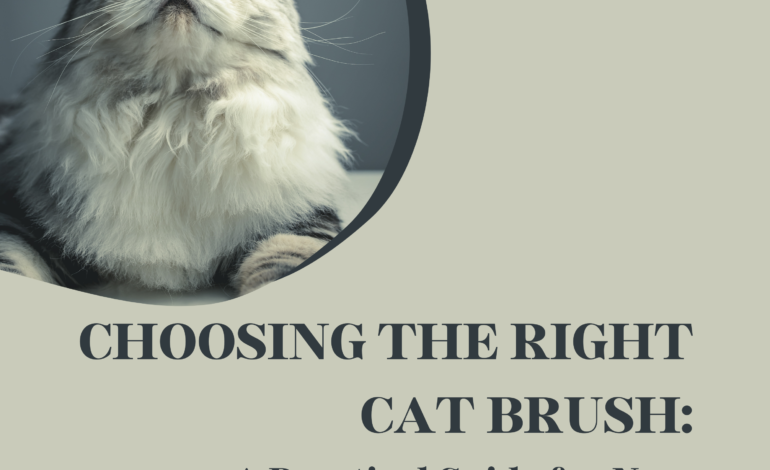
Welcome, Ashburn cat parents! It is likely that you recently welcomed a furry friend and now you have cat hair on your couch, on clothes perhaps in your morning cup of coffee. Grooming isn’t only about appearance but also necessary to keep your cat comfortable, healthy and your relationship together. With new cat owners in Ashburn, learning how to select a cat brush would make grooming less troublesome and help you bond better with your cat friend, as research and veterinary advice indicate daily grooming of long-haired cats and frequent inspections of the skin or coats and fur as the grooming issues are the ones that send cats to the veterinary in measurable proportions.
Why Brushing Your Cat Matters
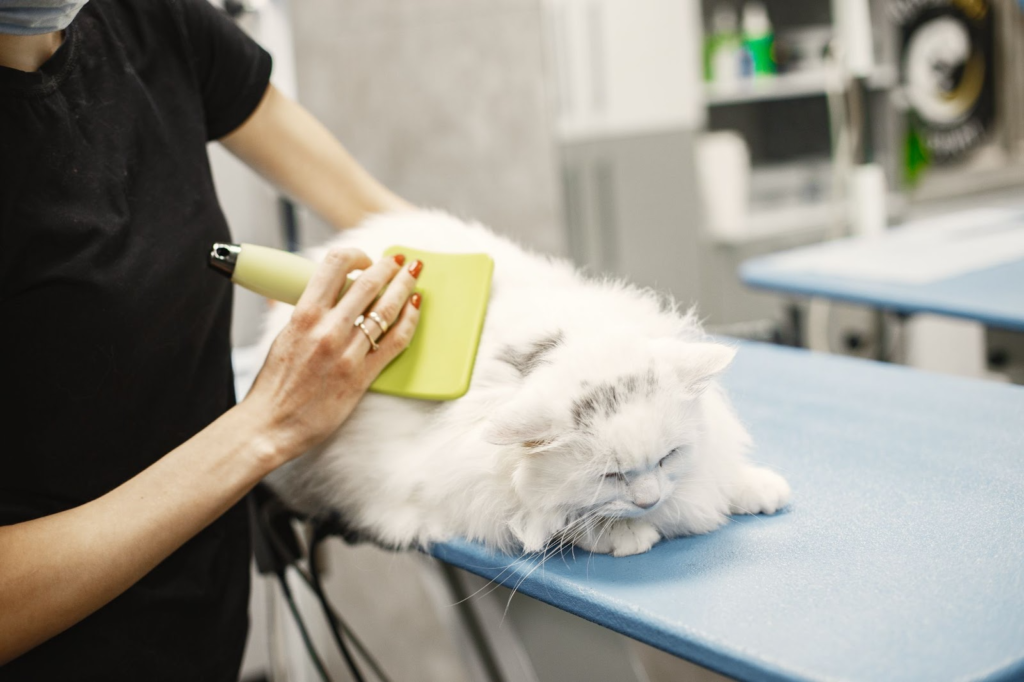
- Removes dead fur & reduces hairballs. Brushing catches loose undercoat before your cat swallows it—cats spend 30–50% of their day grooming themselves, so reducing ingested hair lowers hairball formation and related vet visits.(1)
- Prevents painful mats and tangles. Regular combing stops knots from tightening; long-haired breeds are especially vulnerable — in one large study 12.7% of Persians had a recorded haircoat disorder. (2)
- Improves skin health & circulation. Gentle brushing spreads sebum and stimulates local blood flow, keeping the skin–coat barrier healthier and less prone to dryness or flaking.
- Catch problems early. A quick pass with a brush is a mini health check — you can spot lumps, scabs, parasites, or irritated skin long before they become serious. Routine grooming is recommended by vets for early detection.
- Builds trust & can reduce allergen load. Calm, positive grooming strengthens the cat–owner bond and lowers stress; washing/brushing also temporarily reduces airborne cat allergen (Fel d 1), and new approaches (e.g., anti-Fel d1 IgY in food) are showing measurable reductions in active Fel d1.(3)
Cat Brushes by Coat Type: Quick Guide
| Brush Type | Best For | Coat Type | Benefits | When to Use |
| Bristle Brush | Short-haired cats (e.g., Siamese, Burmese) | Smooth, short coats | Removes loose fur, distributes natural oils, adds shine | 1–2 times per week |
| Rubber Grooming Mitt/Brush | Nervous or sensitive cats | Short to medium coats | Gentle massage, reduces stress, improves bonding | Great for anxious cats or as daily bonding |
| Slicker Brush | Long-haired cats (e.g., Persian, Maine Coon) | Medium to long coats | Removes tangles, prevents mats, reduces shedding | Daily or every other day |
| Wide-Toothed Comb | Detangling sensitive areas | Long coats | Works through knots without pulling | After baths or for mat-prone areas (belly, tail, behind ears) |
| Deshedding Tool / Undercoat Rake | Heavy shedders & double-coated cats (e.g., Ragdoll, Siberian) | Thick, seasonal shedding coats | Removes loose undercoat, prevents hairballs, reduces shedding | During shedding season (spring/fall) |
| Self-Cleaning Slicker Brush | Owners who want easy cleanup | Medium to long coats | Time-saving, hygienic, effective detangling | Regular grooming, especially for multi-cat households |
Cats in Ashburn shed more during spring and fall, so many local owners rely on deshedding tools during these seasons.
Building a Positive Brushing Routine
- Start early — socialization windows matter. Introduce handling and gentle brushing during the kitten socialization period (primary window ≈ 2–7 weeks, with a secondary window up to ~14 weeks) so grooming becomes familiar, not scary. (4)
- Create a calm space. Low noise, a stable surface, and pheromone support (e.g., Feliway) reliably reduce handling stress during grooming and vet visits — studies show pheromone spray/diffusers lower stress behaviors in cats.
- Go slow with desensitization & counterconditioning. Gradual exposure to the brush + pairing with treats works best; practice frequently (VCA recommends regular, short sessions — daily or several times weekly) and always work below the cat’s stress threshold.
- Time brushing after active play or a meal. Using the cat’s natural predatory sequence (play → “catch” → rest/eat) makes them calmer and more receptive — brushing post-play or post-meal increases tolerance.
- Use positive reinforcement, not force. Reward small wins (treats, praise, a minute more) so grooming becomes a positive routine rather than an aversive chore; forced sessions can sensitize the cat and backfire.
- Brush with the grain & handle mats gently. Always follow the hair growth direction and use fingers/wide-tooth combs for tangles; avoid scissors or aggressive pulling (mats can hide skin damage). Routine checks prevent tight mats that require shaving or pro help.
Where to Buy Cat Brushes in Ashburn
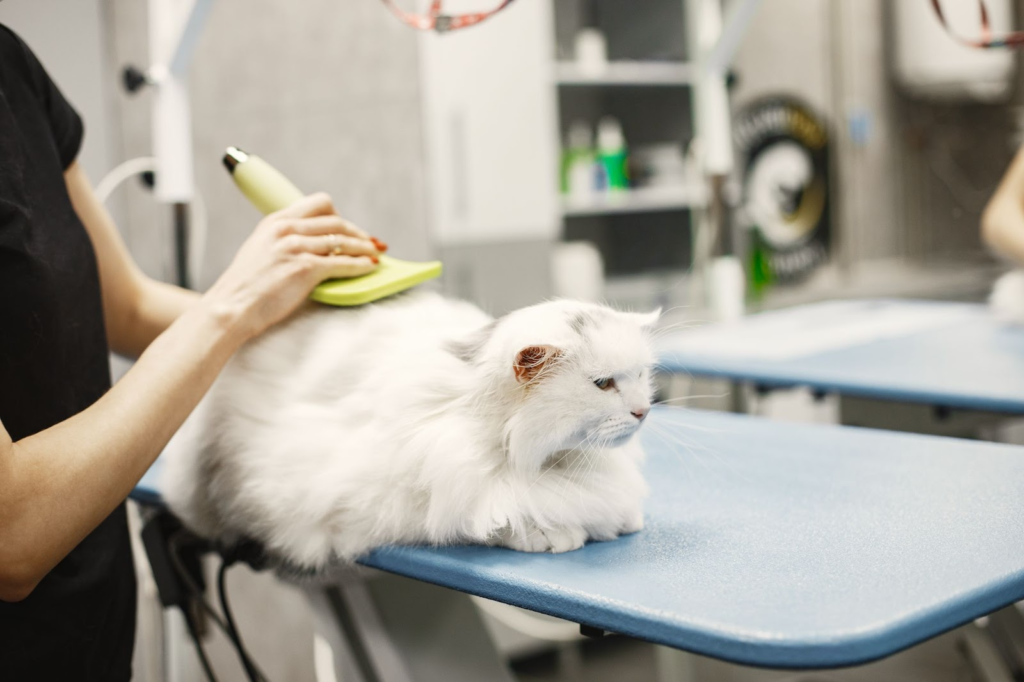
Not sure where to shop? Here are some trusted stores in and around Ashburn where you can find quality grooming tools:
- PetSmart (Sterling & Leesburg) – Carries popular options like the Whisker City Soft Slicker Brush, great for everyday grooming.
- Walmart (Leesburg) – Offers the Vibrant Life Self Grooming Cat Brush, a budget-friendly tool many cats enjoy using on their own.
- Target (Sterling) – Stocks the up&up Cat Brush Grooming Tool, perfect for basic grooming needs.
- DogGone Natural (Ashburn) – Known for holistic pet supplies and a knowledgeable staff who can guide you on grooming essentials.
- Pet Supplies Plus (Ashburn) – A convenient stop with a wide range of brushes and other cat grooming products.
Conclusion
When selecting the appropriate brush, grooming is no longer tedious but rather a time to bond. And a little patience and the appropriate tools will keep your cat comfortable, your house tidier and your relationship stronger. The correct brush will make grooming more of a relaxing experience – keeping your cat’s coat in good condition, alleviating shedding and strengthening the bond you share. Be it the sleek haired short-haired kitty, or the long haired large fluffy ball, the right tools combined with patience and positivity will change everything.
✨ Don’t forget: each tender touch of the brush is not only grooming, but love.
🧕 Want professional guides, grooming tips, and recommendations on products you trust? Find out more about Meow Care Hub and see what your cat can be!
FAQs About Choosing the Right Cat Brush
1. How do I choose a cat brush for my cat?
Start with your cat’s coat type—short-haired cats do well with bristle brushes or rubber mitts, while long-haired cats need slicker brushes, combs, or deshedding tools.
2. What is the best brush for a cat with long hair?
A slicker brush or wide-toothed comb is ideal for preventing tangles and mats. For heavy shedders, a deshedding tool helps manage the undercoat.
3. Do short-haired cats need brushing?
Yes! Short-haired cats still shed. A bristle brush or grooming glove helps remove loose hair and keeps their coat shiny.
4. How often should I brush my cat?
- Short-haired cats: once or twice a week.
- Long-haired cats: daily or every other day.
- Regular brushing prevents tangles and reduces hairballs.
5. Can brushing help with bonding?
Absolutely. Brushing provides comfort, reduces stress, and can turn into a relaxing bonding ritual with your cat.
Resources:
- https://www.vet.cornell.edu/departments-centers-and-institutes/cornell-feline-health-center/health-information/feline-health-topics/cats-lick-too-much
- https://www.rvc.ac.uk/vetcompass/news/persian-cats-at-high-risk-of-health-problems-study-shows
- https://www.jacionline.org/article/S0091-6749%2897%2970242-2/fulltext
- https://www.avma.org/sites/default/files/2024-09/avma-lit-review-socialization-puppies-kittens-0924.pdf


